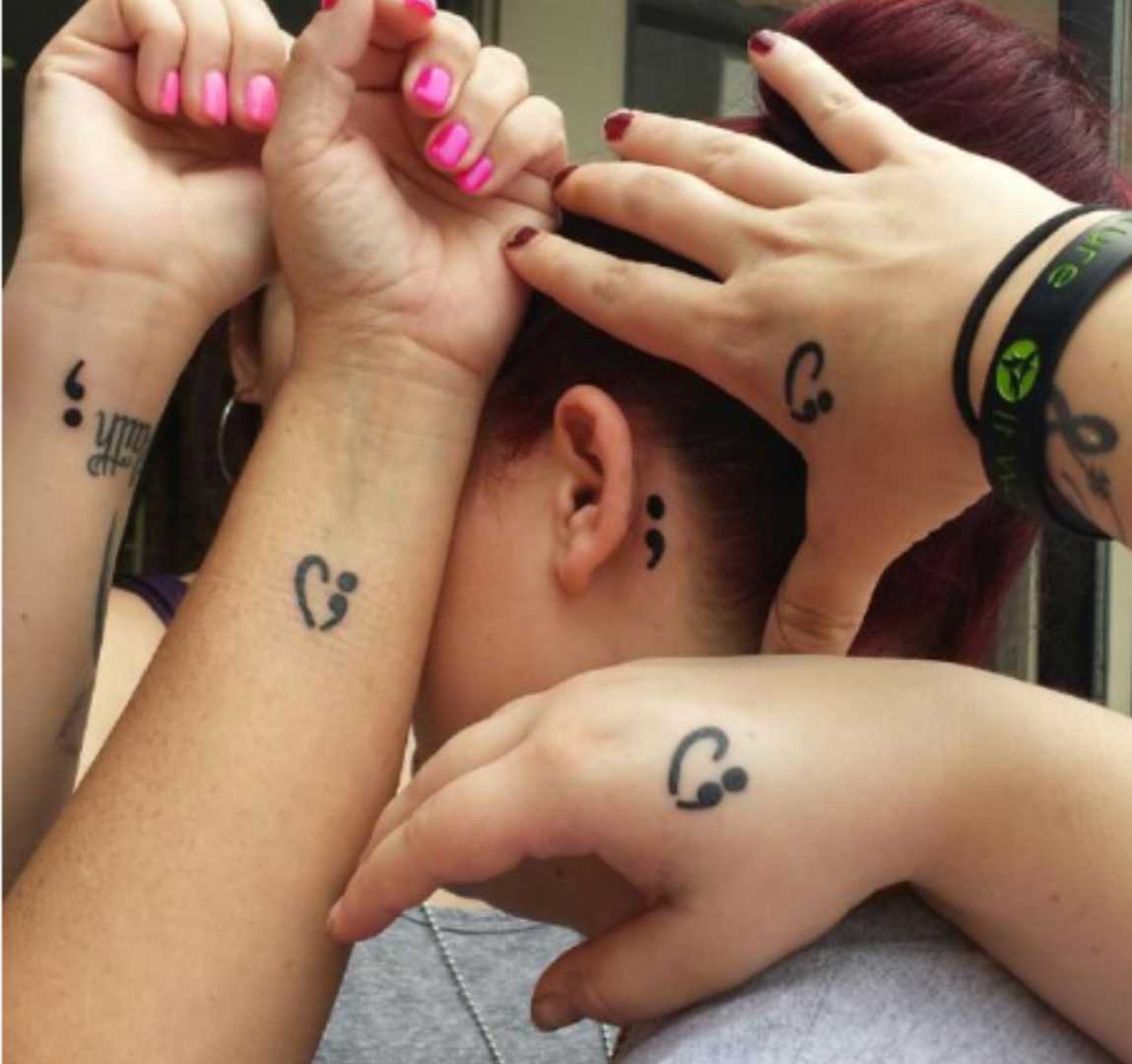The semicolon tattoo, a simple yet profound symbol, has gained significant recognition worldwide as an emblem of mental health awareness and suicide prevention. The semicolon is chosen because it is a punctuation mark utilized when an author could have ended their sentence but chose not to. Translated into the context of life and mental health, it represents that the individual has chosen to continue their life journey despite the struggles they’ve faced.
The design is typically done in black to maintain its simplicity and profound meaning, but it can also be incorporated into more elaborate designs or rendered in color if desired. Colors can introduce additional layers of meaning. For instance, a green semicolon might reference mental health awareness more explicitly, as green is its associated color. A rainbow-colored semicolon could symbolize LGBTQ+ solidarity along with mental health awareness, as individuals in these communities often face increased mental health challenges.
Best part of the body for semicolon tattoo
The best location for a semicolon tattoo depends on the individual’s personal preference and their desire for visibility. Common places include the wrist, ankle, behind the ear, or the nape of the neck. These are areas that can be easily concealed or revealed as needed. However, any place that holds significance for the individual would work.
Why people choose semicolon tattoo
Choosing a semicolon tattoo is a deeply personal decision. It’s a symbol of resilience and the will to keep going, making it a powerful reminder for those battling mental health issues. For others, it can be a sign of solidarity, showing support for people dealing with these challenges. Additionally, it helps foster dialogue around mental health, helping to reduce stigma and encourage understanding. In this sense, the semicolon tattoo serves both personal and broader social purposes, which can make it a meaningful choice for many.
How to take care of semicolon tattoo
The care process for a semicolon tattoo is the same as for any other tattoo. Proper aftercare is crucial for preserving the appearance of your tattoo and preventing infection. Here are some steps to follow:
Cleanliness: Keep the tattoo clean. Wait 24 hours after your tattoo session before gently washing the tattoo area with unscented, mild soap and lukewarm water. Avoid scrubbing and pat the area dry with a clean towel.
Moisturizing: Apply a thin layer of fragrance-free moisturizer or a specific tattoo aftercare product recommended by your tattoo artist. This should be done multiple times a day to keep the tattooed skin well-hydrated.
Avoid Touching: Resist the urge to scratch, pick at, or unnecessarily touch the tattoo while it’s healing. This can lead to infection or damage the tattoo.
Sun Protection: Keep the tattoo out of the sun as much as possible during the healing process. Once healed, always apply sunscreen with a high SPF to prevent fading and skin damage.
Avoid Soaking: Avoid swimming or soaking in water (like in a bath) for at least two weeks after getting your tattoo. Showers are fine, but try to avoid direct water spray on the new tattoo.
Stay Healthy: Keep your body healthy overall. A healthy immune system contributes to better healing, so stay hydrated, eat a balanced diet, and get enough sleep.
Remember, if you notice any signs of infection like severe redness, swelling, pus, or if you have any concerns, consult with a healthcare professional immediately.
Semicolon tattoo designs




How to remove a semicolon tattoo
Removing a semicolon tattoo (or any tattoo) typically involves professional laser treatments. Here are the steps for removing a tattoo:
Consultation: Meet with a professional laser technician or dermatologist. They will evaluate the tattoo and discuss the removal process, the likely number of sessions required, potential side effects, and costs.
Laser Treatment: The actual procedure involves using a laser to break down the tattoo ink. The laser emits high-intensity light pulses that penetrate the skin and get absorbed by the tattoo ink. This causes the ink particles to shatter into smaller fragments.
Body’s Immune Response: After the treatment, your body’s immune system naturally flushes away the broken-down ink particles. This process takes time, which is why multiple sessions (typically weeks or months apart) are required.
Healing: After each session, care for the treated area as directed by the professional. This may include cleaning the area, applying ointment or a bandage, and avoiding sun exposure.
Further Sessions: Repeat the laser treatment as recommended by the professional until the tattoo is no longer visible. The number of sessions required varies based on the size, color, location, and age of the tattoo, as well as individual skin characteristics.
It’s important to know that tattoo removal can be more painful than getting a tattoo. Some liken the feeling to a rubber band snapping against the skin. Local anesthesia or numbing creams may be used to manage the discomfort.
Lastly, while laser removal is often effective, it may not completely erase the tattoo, and some residual scarring or skin discoloration may remain. It’s also a costly and lengthy process, which is why it’s important to be certain about any tattoo before getting it.
Source: Scopenew.com – Guide










